
 |
|
July 2017 News from No BoundariesSummer Meeting Preview | Seeking Input for Webinars | New Members Are Welcome Around the Maintenance World Meetings and Events | Training Opportunities | Research |
The No Boundaries Roadway Maintenance Practices pooled fund project, #TPF-5(330), facilitates the implementation of proven, ready-to-deploy maintenance innovations. |
|
Welcome! This newsletter from the national No Boundaries consortium features the latest updates on the group's activities and compiles recent research, state practices, and training opportunities related to non-winter roadway maintenance from around the country. |
News from No Boundaries |
|
Summer Meeting Preview
In addition, tentative field trips and events include:
Presentation and event highlights will appear in a future issue of this newsletter. | |
|
Earlier this year, No Boundaries began developing its new webinar series, which will serve as a platform for accelerated technology transfer with a broad national audience. |
|
New Members Are Welcome
No Boundaries is Transportation Pooled Fund project #TPF-5(330). State DOT commitments to the project can be made using 100% federal funds. Contact Brian Hirt, CTC & Associates, at 402-770-9067 for more information. |
 |
Meetings and Events |
| Date | Meeting / Event | Location |
| August 21-22 | 9th New York City Bridge Conference (Bridge Engineering Association) | New York City |
| August 28-30 | Midwestern Pavement Preservation Partnership Annual Meeting | Traverse City, Michigan |
| September 11-13 | Northeast Bridge Preservation Partnership Annual Meeting | New Brunswick, New Jersey |
| September 26-27 | 2017 University Transportation Centers Spotlight Conference: Rebuilding and Retrofitting the Transportation Infrastructure | Washington, D.C. |
| October 23-25 | Rocky Mountain West Pavement Preservation Partnership Annual Meeting | Seattle, Washington |
| November 6-8 | Midwest Bridge Preservation Partnership Annual Meeting | Minneapolis, Minnesota |
| July 14-17, 2018 | 12th TRB National Conference on Transportation Asset Management | San Diego, California |
To recommend a maintenance-related conference or meeting for this calendar (including state and local events), please email Brian Hirt with details and a link to the event website. |
||
Training Opportunities |
|
TRB Webinar: Rigid Pavement Rehabilitation: Looking Back, Looking Forward TRB will conduct a webinar on rigid pavement rehabilitation on September 5. The webinar will examine how rigid pavement rehabilitation has evolved over the last several decades and will discuss new and innovative rehabilitation solutions. Topics will include full- and partial-depth repairs, load transfer restoration, and concrete overlays. |
|
Asset Management Research |
|
Hotspot and Sampling Analysis for Effective Maintenance and Performance Monitoring Due to resource constraints, many agencies assess the condition of their roadways and other assets by inspecting a sample of those assets. This research project investigated two sampling frameworks designed to provide statistically representative samples that reflect the true level of maintenance at the state, region, or maintenance station level. One framework is designed for collecting data on a single type of infrastructure and the other for a network with multiple types. Researchers found that both methods outperformed the simple random sampling method that is widely used across agencies. Report. |
 |
|
Guidelines for Replacement of Deficient Bridges with Low-Water Stream Crossings in the Rural Midwest
In rural areas, counties often cannot afford to replace all deficient bridges, and agencies can be forced to close low-volume roads instead. In some locations, a low-water stream crossing (LWSC) can be a practical, low-cost alternative to bridge replacement. LWSCs are structures that may occasionally be impassable due to floodwaters; they include unvented fords, vented fords, low-water culverts, low-water bottomless culverts, and low-water bridges. This report provides guidance to agencies considering this approach. The lower initial cost of an LWSC must be balanced against maintenance requirements and safety considerations. This study examined nine recent LWSC projects in Kansas, creating case studies that address road and traffic characteristics, stream characteristics and hydrology, governmental permits and regulatory issues, project costs, and maintenance requirements and performance to date. Report.
|
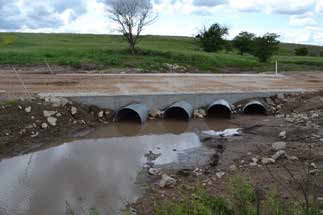 |
|
Prediction and Mitigation of Scour and Scour Damage to Vermont Bridges Over 300 Vermont bridges were damaged in 2011�s Tropical Storm Irene, and many experienced significant scour. This project sought to develop methods to aid in predicting scour vulnerability by leveraging data on existing Vermont bridges and case studies of bridge scour damage and integrating this information with stream geomorphology data. Researchers found that measures of site-specific stream power correlated with levels of bridge damage sustained during the Tropical Storm Irene. These measures can help predict which bridges are most likely to sustain flood-related damage in the future. The report also makes recommendations for inspection and mitigation procedures. Report. |
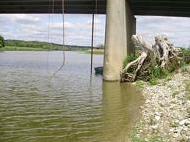 |
Bridge Repair and Rehabilitation Research |
|
Evaluation of Repair Techniques for Impact-Damaged Prestressed Beams When an overheight vehicle hits a bridge, damage to the bridge can range from minor to catastrophic, potentially requiring repair or replacement of a bridge beam. For prestressed concrete beams, the traditional repair methods are strand splices and fiber-reinforced polymer (FRP) wraps. This project evaluated and compared several repair techniques, including methods that used a newer material, fabric-reinforced cementitious matrix (FRCM), as an alternative to traditional FRP wrap. The greatest percentage of original strength was restored using the FRP repair and the repair method that combined FRCM and strand splices. The study indicated that FRCM can be an effective component of repair techniques for impact-damaged prestressed beams. Report. |
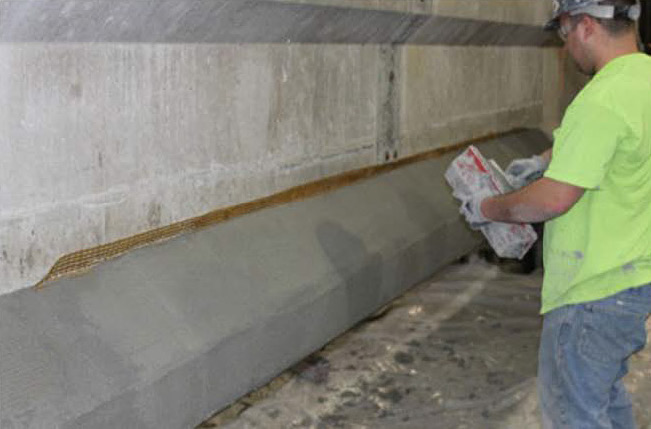 |
|
Evaluation of Maintenance Procedures for Bridge Spalling on Parapet Walls Spalling and deterioration of concrete parapet walls can endanger motorists, since pieces of deteriorated concrete may fall onto the road below. Ohio DOT�s current repair method is to chip off the deteriorated concrete, but this process may damage the sound concrete and leaves an unprotected surface. This project used a literature search to explore methods of removing deteriorated concrete and protecting or sealing the remaining surface. Hydrodemolition using a robot was identified as the most promising method of concrete removal since it does not damage the remaining concrete. For sealing the surface, researchers identified polyurea as a promising option. In addition to sealing the concrete, polyurea may provide a reinforcing barrier that could retain loose pieces of concrete. Report. |
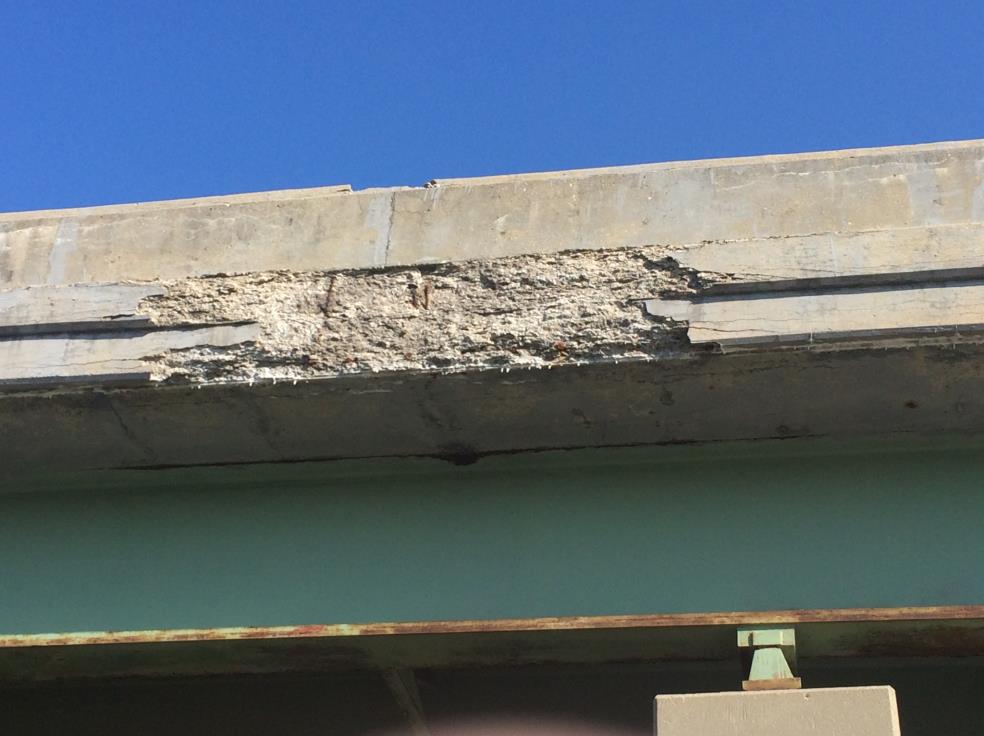 |
|
Cost-Effective Strategies for Repairing Grout in Post-Tensioned Bridges Post-tensioned bridges, which are strengthened by running steel strands through the concrete members, are especially durable, but the steel strands must be grouted to keep them from corroding. Grouting materials and practices used in about 40 older Minnesota bridges often produced air- or water-filled voids within the grout, which could lead to corrosion and may require repair. A two-phase research effort produced techniques for evaluating these structures and guidelines for managing the process of soliciting and procuring engineering and construction services to repair them. Report and two-page Technical Summary. In related research:
|
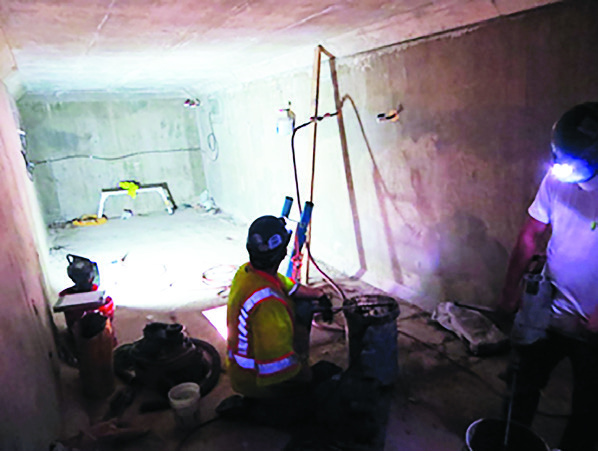 |
Culvert Maintenance Research |
|
Best Practices for Assessing Culvert Health and Determining Appropriate Rehabilitation Methods This research project developed guidance for South Carolina DOT on managing and maintaining culvert infrastructure, including guidance on the latest culvert inspection techniques. The project developed a deterioration model to predict the future condition of culverts; developed a risk-based renewal prioritization model for deteriorating culverts; and developed guidance for selecting renewal methods given the culvert material, size, and user preferences. The models developed for deterioration prediction, risk-based prioritization, and renewal selection can help in short-term and long-term planning of culvert infrastructure maintenance. Report. In related research:
|
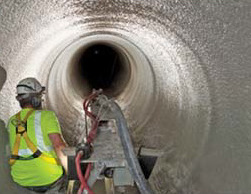 |
|
Inspection Vehicle Developed In-House Improves Culvert Repair An enhanced radio-controlled car developed by Minnesota DOT workers is saving the department money by improving culvert inspections. The Hydraulic Inspection Vehicle Explorer (HIVE) takes lights and a camera into culverts and transmits inspection data wirelessly to a tablet. Each vehicle costs roughly $1,500. In one case study, an end-of-pipe inspection showed significant pipe damage that would typically result in a full replacement at a cost of about $45,000. However, HIVE video footage showed that the damage was limited to just 12 feet near the end of the pipe. Instead of replacing the entire pipe, MnDOT workers fixed the problem for $1,000, resulting in a $44,000 savings. The HIVE has also been used to detect deterioration deep within a pipe, allowing damage to be repaired before it progressed. Project page. |
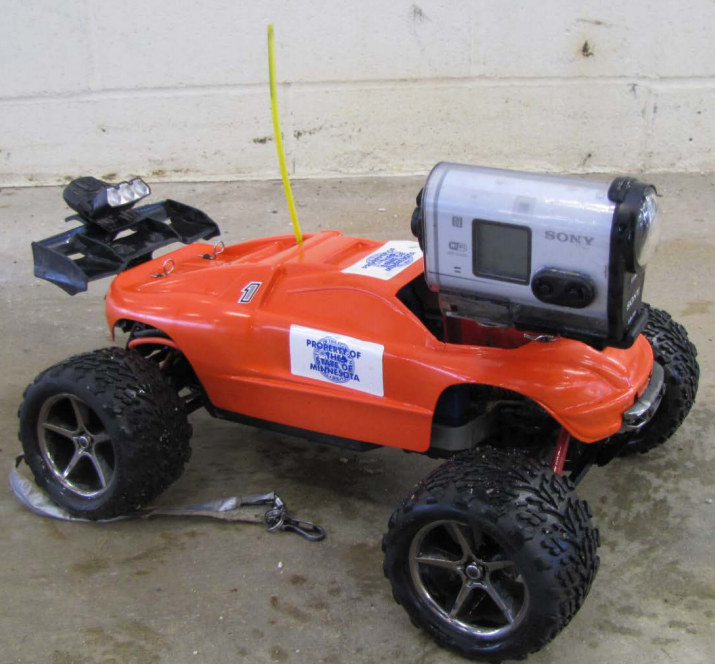 |
Drainage Systems Maintenance Research |
|
Evaluation of Trench and Slotted Drain Maintenance and Cleaning
In Ohio, trench and slotted drains are increasingly being used to remove storm water from roadways. These drains must be properly cleaned and maintained to prevent vehicles from hydroplaning, eliminate flooding and avoid premature roadway failure. Researchers documented Ohio DOT's current methods for cleaning trench and slotted drains and recommended alternative cleaning methods that can improve safety, production rate and cost-effectiveness, such as horizontal directional drilling, horizontal auger boring and use of robotic cleaners. Report. |
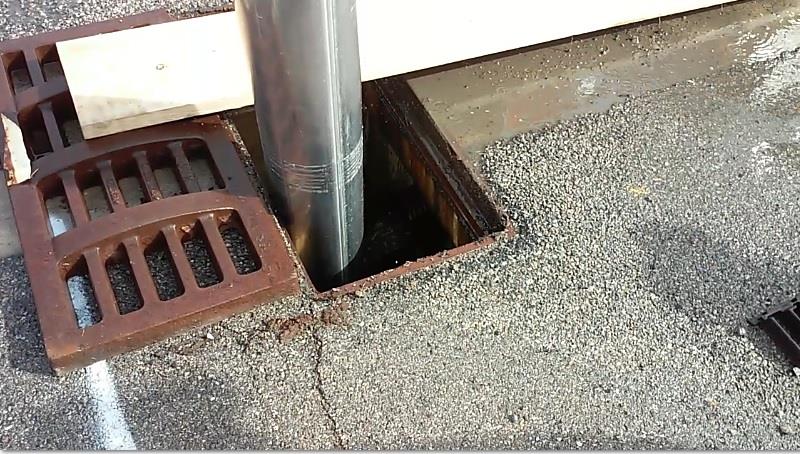 |
Funding and Budgeting Research |
|
Examining the Potential Impacts of Maintenance Investment and Capital Reinvestment in Vermont�s Roadway Infrastructure Network This project assessed the current state of the practice of implementing different reinvestment and disinvestment strategies at the state level and examined how those strategies could be employed in Vermont. Researchers identified candidate corridors for disinvestment based on quantifiable measures of how critical the corridors are to traffic flow throughout the roadway network, and considered how disinvestments would impact vulnerable populations and access to critical services. The project developed a framework to help guide Vermont Agency of Transportation in making strategic reinvestment/disinvestment decisions. Report. | |
Pavement Repair and Rehabilitation Research |
|
Evaluation of Seal Coat Construction Materials Through this project, researchers developed Guidelines for TxDOT in Selecting Seal Coat Materials based on tests of aggregates and binders commonly used in Texas. They conducted lab tests to evaluate the durability and wear characteristics of common aggregates, and tested binders for flushing characteristics. They also used field tests to compare seal coat performance in terms of bleeding and aggregate loss. Although many factors can influence seal coat performance, including site selection and construction factors, this research pointed to polymer-modified binders providing greater performance reliability than unmodified binders. Report and Guidelines. |
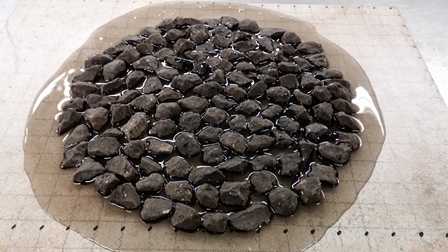 |
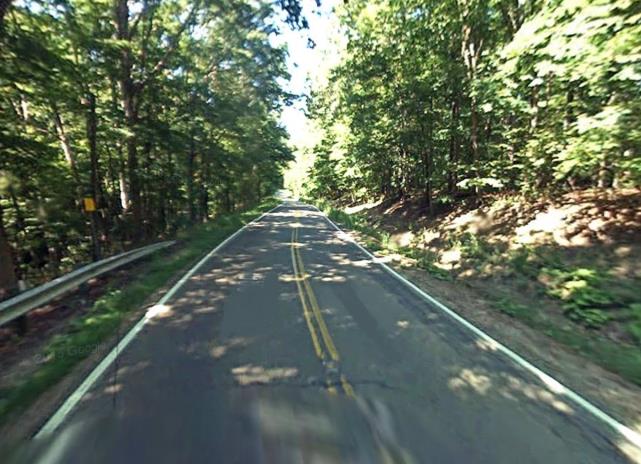 Effects of Tree Canopy on Rural Highway Pavement Condition, Safety, and Maintenance Roadside trees are valued for their natural beauty and because they provide shade, control evaporation, block air movement, catch rain and channel rain wash, and control local humidity. However, road managers tend to believe that the presence of trees accelerates pavement damage through increased surface water pooling, poor density attainment, and other effects. This accelerated damage reduces pavement life and increases maintenance and rehabilitation costs. As a first step in investigating tree canopy impacts on road pavement condition and driver safety, this project produced a synthesis of current practices in Ohio and other states related to tree canopy maintenance. Report. |
|
Validation of Hot-Poured Crack Sealant Performance-Based Guidelines This pooled fund study undertook a comprehensive effort to validate thresholds for performance-based guidelines and grading systems for hot-poured asphalt crack sealants. This project also evaluated the short-term and long-term aging effects of hot-poured crack sealants through a differential aging test. An extensive field performance study incorporated a wide spectrum of commonly used sealants installed in eight test sites around the United States using two basic treatment methods: clean and seal and rout and seal. Report and Guidelines. |
 |
Roadside Maintenance Research |
|
An Innovative Approach to Smarter Mowing, Utilizing Automated Vehicle Location to Enhance Mowing Operations By providing real-time data on field operations, automated vehicle location (AVL) systems have allowed many DOTs to gain efficiencies in snowplowing and other fleet vehicle operations. Minnesota DOT undertook a pilot project to assess whether AVL could yield similar benefits in mowing operations. Potential benefits include increased ability to locate and avoid mowing noxious weeds (with a resulting reduction in herbicide use), automated reporting, reduced paperwork, and more efficient allocation of operator time. The pilot project allowed MnDOT to address challenges and document lessons learned, and the project�s success provided the basis for continued use of AVL technology during the 2017 season and potentially beyond. Project page. |
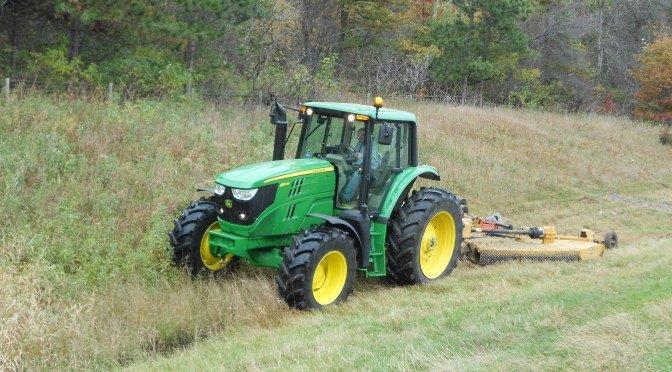 |
|
Evaluating Vegetation Management Practices for Woody and Herbaceous Vegetation This project evaluated vegetation management practices currently used by Ohio DOT districts and recommended changes to increase efficiency and cost-effectiveness, improve safety for workers and roadway users, and improve roadside aesthetics. Researchers recommended that ODOT implement a Roadside Integrated Vegetation Management program that emphasizes safety and environmental stewardship. The recommendations include improvements in herbicide use, equipment management, and staff training. Report. |
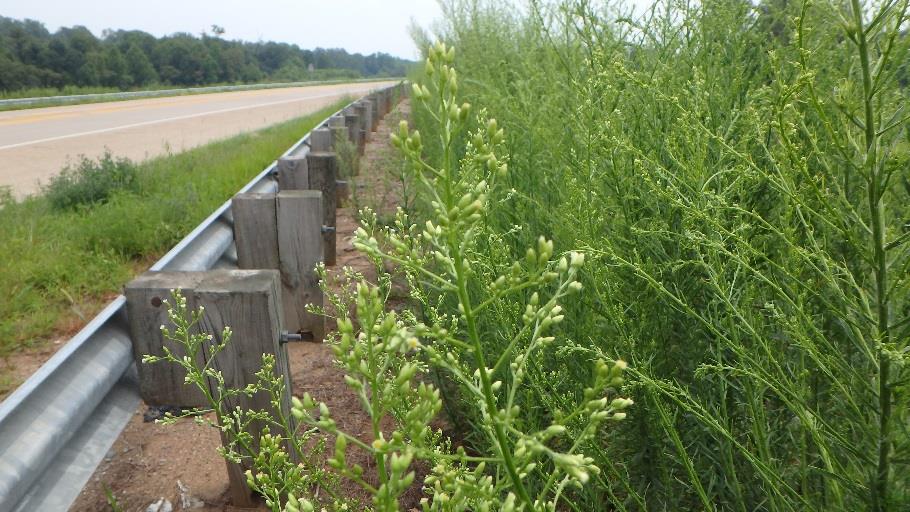 |
Subscribe to this newsletter |